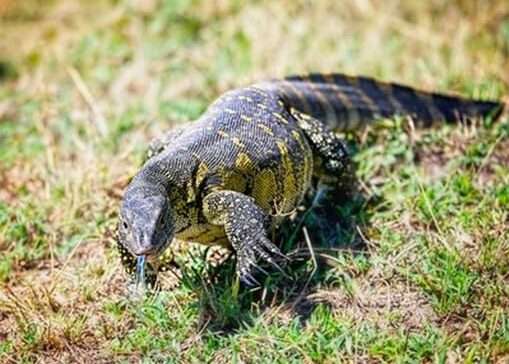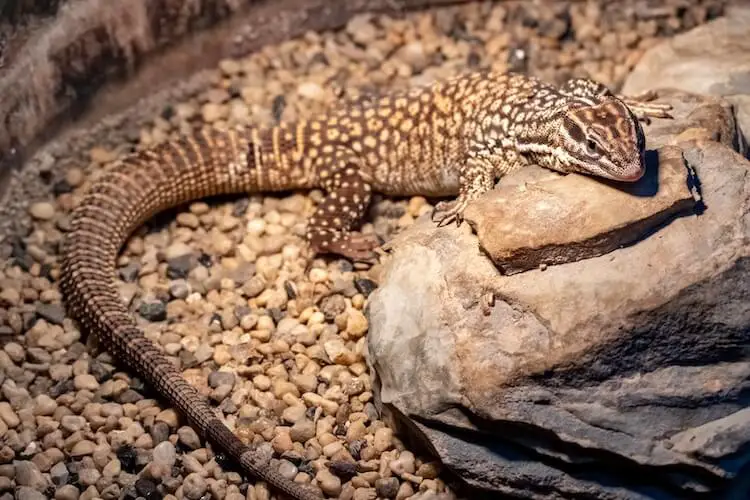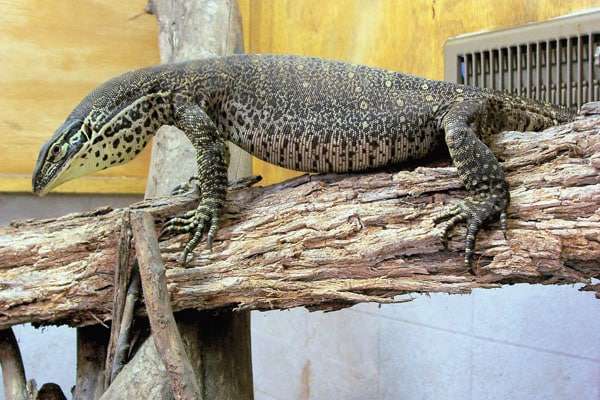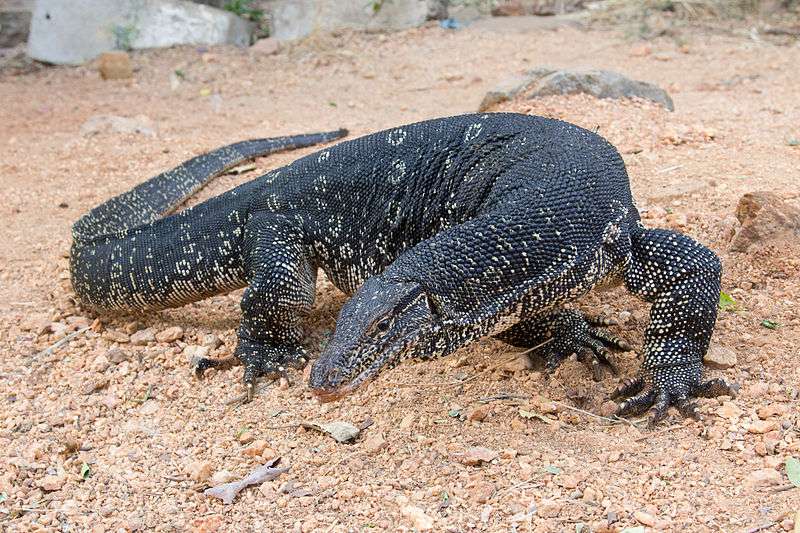
Description
Scientific name: Varanus dumerilii
Life span: Up to 20 years
Dumeril’s monitors are mostly dark brown, with a few brighter but unclear crossbars. The juveniles show very different patterns and colors on their body. They may appear dark black, which is divided up on the back by a number of yellow crossbars. Juveniles have glossy orange-red or occasionally yellow heads. The average total length of an adult Dumeril monitor is 4- 4.5 feet.

Native Region/Habitat
The Dumeril’s monitor is native to Sumatra, Peninsular Malaysia, Riau, smaller Indonesian islands, southern Burma, Borneo, Bangka-Belitung, and Thailand. They are found in mangrove wetlands, deep evergreen woods, and heavily damp.
Behavior
Dumeril’s monitor lizards are not arboreal that much. They are found in tree and ground holes and they love to dig the ground. Sometimes they seem to be submerged underwater in search of food. They are often very docile and not very active. A single male Dumervil’s monitor can live with one or two females, but they need to be closely monitored. The nesting space has to be fenced and filled with 1-2 feet of a damp mixture of sand, topsoil, and peat moss. About captive reproduction, there is still a lot we don’t know. A Female lays 4-10 eggs and incubation time is 160-200 days. Dumeril’s monitor feeds on crab. They also need snails, mollusks, insects, frogs, fish, and smaller rodents.
Care As a pet/In captivity
Dumeril’s monitor lizard requires a roomy enclosure so they can move around freely. Larger is usually preferable, although it’s advised to keep animals in cages twice as long as they normally do. The size of their enclosure must be 200 cm in length,120cm in width, and 120cm in height for a pair. A Dumeril’s monitor may be kept in either a room designated for it or a handmade enclosure of glass or wood. This monitor requires a very warm sunbathing area. They require very warm temperatures between 80- 120 F in the basking area. It will also require a hiding place and water where it can urinate.
Table





